Struggling with grammar? Don’t worry, you’re not alone! Many students find grammar challenging, but it doesn’t have to be a battle. This guide provides 15 simple yet effective grammar hacks that will significantly improve your writing.
These hacks are designed to be practical and easy to implement, regardless of your current grammar level. We’ll cover everything from sentence structure to punctuation, helping you write with more confidence and clarity.
Get ready to transform your writing and boost your grades! Let’s dive into these awesome grammar hacks that will make your essays shine.
-
Mastering Commas
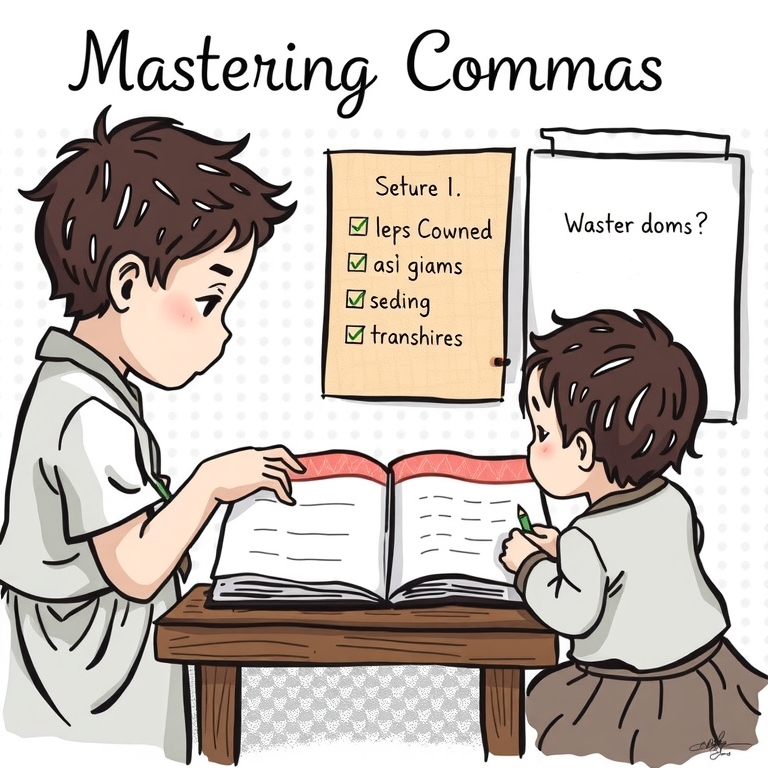
Mastering Commas Mastering commas dramatically improves clarity. Use them after introductory phrases like ‘however’ or ‘therefore.’ Don’t forget commas before coordinating conjunctions (and, but, or, nor, for, so, yet) joining independent clauses. Practice identifying these sentence structures to improve comma placement.
Commas separate items in a series. For example, ‘I bought apples, bananas, and oranges.’ Note the Oxford comma before ‘and’—it’s optional but recommended for clarity. This simple rule prevents ambiguity and ensures smooth reading.
Use commas to set off nonessential information. This includes appositives (phrases that rename a noun) and parenthetical expressions. For example, ‘My dog, a fluffy terrier, loves to play fetch.’ Notice how the appositive is set off by commas.
Avoid comma splices by not joining two independent clauses with only a comma. Instead, use a semicolon, a coordinating conjunction with a comma, or separate them into two sentences. Mastering these basic comma rules will significantly improve your writing.
-
Subject-Verb Agreement

Subject-Verb Agreement Mastering subject-verb agreement is crucial for clear writing. Singular subjects take singular verbs (e.g., ‘The dog barks’). Plural subjects need plural verbs (e.g., ‘The dogs bark’). Remember that collective nouns (team, group) can be singular or plural depending on context.
Tricky cases often involve phrases between the subject and verb. Ignore these intervening phrases; focus on the subject itself. For example, ‘The basket of apples sits on the table’—’basket’ is the subject, not ‘apples’. Practice identifying the true subject to avoid errors.
Indefinite pronouns (each, everyone, anybody) are always singular and require singular verbs. Compound subjects joined by ‘and’ usually take plural verbs (e.g., ‘John and Mary are friends’). However, if the subjects refer to the same thing, use a singular verb (e.g., ‘My friend and colleague is here’).
When using ‘or’ or ‘nor’ to connect subjects, the verb agrees with the subject closest to it. For instance, ‘Neither the cat nor the dogs like the new food’. Review common exceptions and practice regularly to build confidence and accuracy in your writing.
-
Tense Consistency

Tense Consistency Maintaining consistent verb tense is crucial for clear writing. Shifting tenses unnecessarily confuses the reader. Stick to past tense for narratives, present tense for explanations, and future tense for predictions. Consider using a timeline to visualize your narrative’s progression.
Practice identifying tense shifts in your own writing. Read your work aloud to catch awkward jumps between past, present, and future. Use a thesaurus to find verb forms that fit your chosen tense. Small changes can make a big difference in clarity.
Vary your sentence structure to avoid monotony. Combine simple sentences to create complex ones for improved flow. Use transitions effectively to signal shifts in time or action, ensuring smooth transitions between different parts of your writing.
Proofread carefully! Look for inconsistent tenses, particularly in longer pieces of writing. Consider using grammar-checking software as an additional tool to catch errors. Revision is essential for polishing your work and creating clear, consistent writing.
-
Pronoun Agreement

Pronoun Agreement Mastering pronoun agreement ensures your writing is clear and error-free. Pronouns like he, she, it, they, we, and I must agree in number (singular or plural) with their antecedents (the nouns they refer to). A simple trick is to circle the noun and the pronoun and check for agreement. For example, ‘The dog wagged its tail’ is correct because ‘dog’ (singular) and ‘its’ (singular) agree.
Tricky situations arise with collective nouns (team, group). These can be singular (the team plays its best game) or plural (the team are arguing amongst themselves), depending on whether you focus on the group as a unit or the individual members. Look at the context to determine if you should use a singular or plural pronoun. Pay close attention to the verb used, as this will give a clue.
Another common issue is with indefinite pronouns (everyone, someone, anybody). These are always singular, requiring singular pronouns. For instance, ‘Everyone brought their lunch’ is grammatically incorrect; the correct phrasing is ‘Everyone brought his or her lunch’ or ‘Everyone brought their lunch’ (the latter, while technically incorrect per traditional grammar, is now more widely accepted as appropriate in informal settings).
When dealing with compound subjects joined by ‘and,’ use a plural pronoun. If joined by ‘or’ or ‘nor,’ the pronoun agrees with the subject closest to it. For example, ‘Both the cat and the dog chased their tails,’ whereas ‘Neither the cat nor the dogs wagged their tails’ is correct because the closest subject ‘dogs’ is plural.
-
Avoiding Run-on Sentences
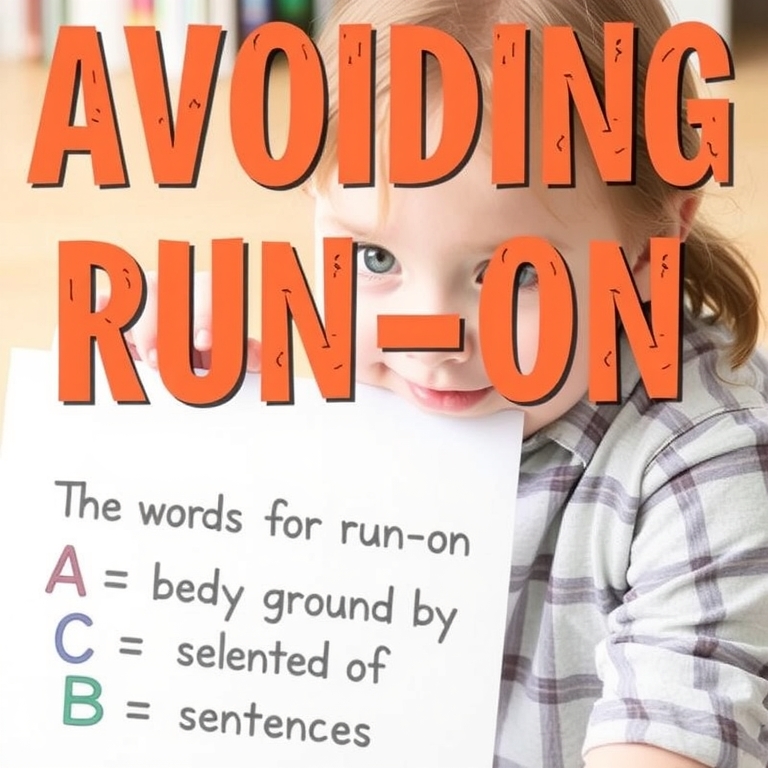
Avoiding Run-on Sentences Run-on sentences are a common grammar mistake. They often occur when two or more independent clauses are joined incorrectly, without proper punctuation. To fix them, separate the clauses with a period, a semicolon, or a comma and a coordinating conjunction (and, but, or, nor, for, so, yet).
Another effective strategy is to break the run-on sentence into two or more shorter, simpler sentences. This improves clarity and readability. Consider using transition words like ‘however,’ ‘therefore,’ or ‘furthermore’ to connect related ideas while maintaining separate sentence structures.
Using strong verbs and precise nouns can naturally reduce sentence length and prevent run-ons. A concise writing style, emphasizing clear subject-verb relationships, contributes to grammatical accuracy. Short, declarative sentences are often easier to understand and prevent grammatical errors.
Finally, practice reading your work aloud. This can help you identify awkward phrasing and overly long sentences that might indicate a run-on. Regularly proofreading and revising your writing enhances your overall grammar skills and prevents errors before submission.
-
Sentence Variety
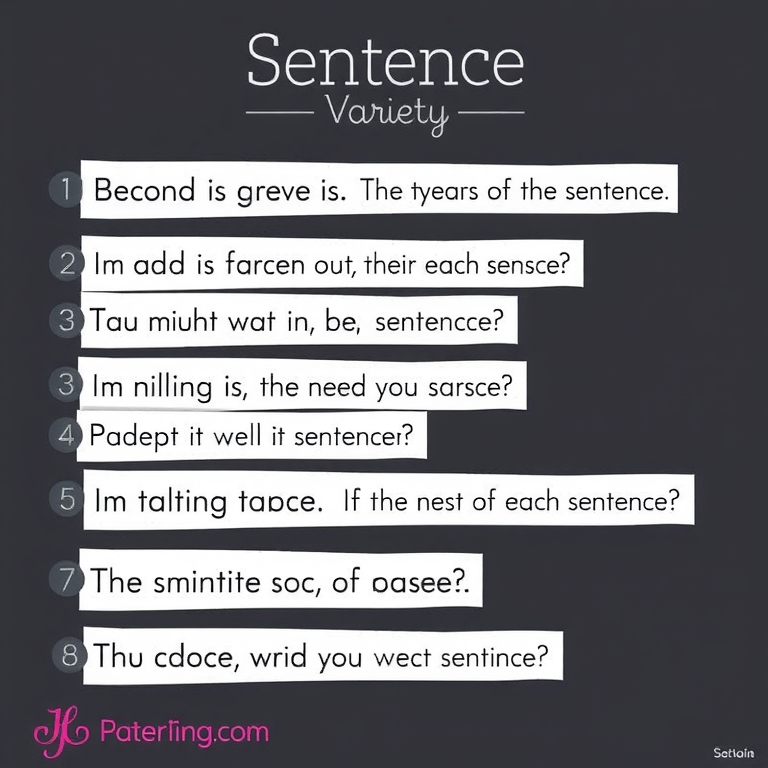
Sentence Variety Vary your sentence beginnings to avoid monotony. Instead of always starting with the subject, try starting with an adverb (Quickly, she ran), a prepositional phrase (In the garden, a bird sang), or a participial phrase (Running swiftly, the cheetah chased its prey). This creates a more dynamic and engaging reading experience. Remember to keep your sentences clear and concise for the best effect.
Experiment with different sentence lengths. Mix short, punchy sentences with longer, more complex ones. Short sentences create emphasis, while longer sentences allow for more detail and nuance. This variation keeps the reader interested and prevents the writing from feeling repetitive or choppy.
Use a variety of sentence structures. Don’t just rely on simple subject-verb-object sentences. Incorporate compound sentences (using conjunctions like and, but, or), complex sentences (with dependent clauses), and compound-complex sentences. This demonstrates a sophisticated understanding of grammar and enhances the overall flow of your writing.
Mastering sentence variety significantly improves your writing style. It helps to avoid monotonous patterns and keeps the reader engaged. Practice regularly by consciously choosing different sentence structures and beginnings, then review and edit your work carefully.
-
Active vs. Passive Voice

Active vs. Passive Voice Mastering active and passive voice significantly improves writing clarity. Active voice uses the subject performing the action (e.g., ‘The dog chased the ball’). Passive voice emphasizes the action’s recipient (e.g., ‘The ball was chased by the dog’). Choose active voice for stronger, more direct sentences.
To identify passive voice, look for a form of ‘to be’ (is, are, was, were, etc.) followed by a past participle (-ed, -en, -t). For example, ‘The cake was baked’ is passive; ‘She baked the cake’ is active. Rephrasing passive sentences into active ones often makes your writing more concise and impactful.
Practice converting passive sentences. Start by finding the subject performing the action, then restructure the sentence to place it at the beginning. Consider using strong action verbs to add dynamism. For instance, transform ‘The letter was written by him’ to ‘He wrote the letter’.
While passive voice isn’t always wrong, overuse weakens writing. Save passive voice for instances where the actor is unknown or unimportant (e.g., ‘Mistakes were made’). Focus on active voice for most situations to improve sentence flow and readability. Use active voice to enhance your writing style and make it more engaging for your readers.
-
Proper Punctuation
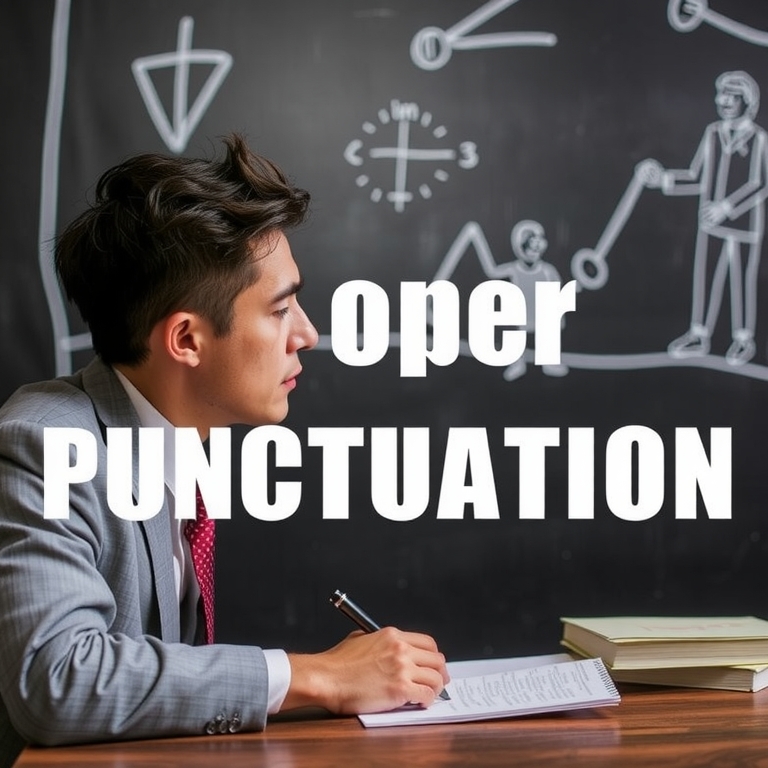
Proper Punctuation Mastering punctuation significantly elevates your writing clarity. Proper comma usage prevents ambiguity and improves sentence flow. Practice identifying independent and dependent clauses to use commas effectively; remember the Oxford comma for clarity in lists.
Semicolons connect closely related independent clauses, offering a sophisticated alternative to periods or conjunctions. Use a colon to introduce a list, explanation, or quotation. Mastering these nuances demonstrates grammatical proficiency.
Apostrophes indicate possession and contractions. Avoid common errors like its/it’s and your/you’re. Regular practice with these specific rules will drastically improve your writing’s accuracy.
Quotation marks enclose direct quotes and titles of shorter works. Learn the differences between single and double quotation marks depending on your style guide. Consistent and correct punctuation showcases attention to detail and strengthens your written communication.
-
Effective Word Choice

Effective Word Choice Precise word choice significantly impacts clarity and persuasiveness. Instead of saying ‘good,’ consider alternatives like ‘excellent,’ ‘remarkable,’ or ‘satisfactory,’ depending on the nuance you want to convey. Using strong verbs and specific nouns elevates your writing beyond generic descriptions. Remember to select words that accurately reflect your intended meaning.
Varying sentence structure prevents monotony and keeps your reader engaged. Mix short, punchy sentences with longer, more complex ones to create rhythm and emphasis. Experiment with different sentence beginnings; avoid starting too many sentences with ‘The’ or ‘It.’ This will improve the flow and readability of your work.
Eliminate unnecessary words and phrases—’very,’ ‘really,’ ‘actually,’ and similar intensifiers often weaken your writing. Concise writing is powerful writing; each word should contribute to the overall meaning. Instead of ‘It is important to note that…’, simply state the important point directly.
Mastering synonyms is a valuable skill. Using a thesaurus responsibly expands your vocabulary and avoids repetition. However, ensure the synonym fits the context perfectly; a word’s subtle connotations can change meaning dramatically. Pay attention to word choice; the right word makes all the difference.
-
Parallel Structure
Parallel structure means using the same grammatical form to express similar ideas. This creates a sense of balance and clarity in your writing. For example, instead of ‘She likes swimming, to hike, and biking,’ try ‘She likes swimming, hiking, and biking.’ Notice how each element is now a gerund.
Vary your parallel structures to keep your writing engaging. You can use parallel nouns (‘cats, dogs, and birds’), verbs (‘runs, jumps, and plays’), adjectives (‘tall, dark, and handsome’), or phrases (‘in the morning, in the afternoon, and in the evening’). Don’t be afraid to experiment with different combinations. Remember consistency is key!
Parallelism improves clarity and readability. It helps your reader easily follow your train of thought. A well-structured sentence with parallel elements flows smoothly, preventing confusion and making your points stronger. Look for places where you’re listing things or comparing ideas to see where you can use this.
Mastering parallel structure elevates your writing to a more professional level. It demonstrates a command of grammar and style. Practice regularly, focusing on identifying and correcting inconsistencies in your writing. With consistent effort, it will become second nature!
-
Using Modifiers Correctly
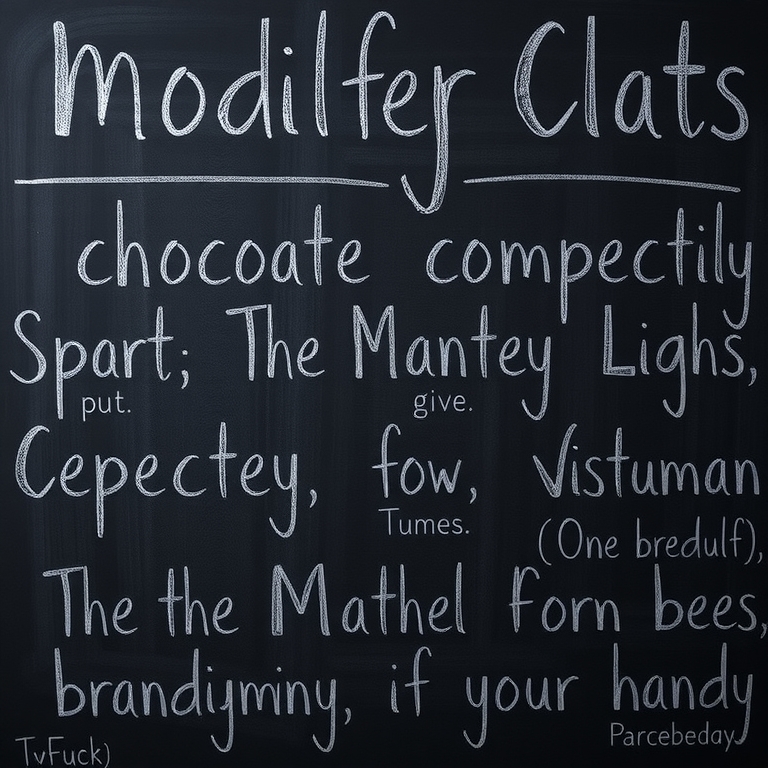
Using Modifiers Correctly Mastering modifiers—adjectives and adverbs—significantly improves writing clarity. Place adjectives directly before the nouns they modify. For example, instead of ‘The dog, big and brown, barked loudly,’ try ‘The big brown dog barked loudly.’ This simple shift enhances readability.
Adverbs, describing verbs, adjectives, or other adverbs, often end in ‘-ly’. Position them carefully; avoid interrupting the flow. Consider ‘He quickly ran to the store’ versus ‘He ran quickly to the store.’ Both are correct, but the second version is generally smoother.
Dangling modifiers create confusion. Ensure your modifier clearly refers to the subject of the sentence. For instance, ‘Walking to school, the sun shone brightly’ is incorrect. Correct it to ‘Walking to school, I saw the sun shine brightly.’ This fixes the ambiguous relationship.
Vary your sentence structure to prevent monotonous writing. Use different types of modifiers to add depth and interest to your writing. Experiment with phrases like ‘surprisingly quiet’ or ‘incredibly fast’ to make your descriptions more vivid and engaging.
-
Apostrophes for Possession

Apostrophes for Possession Mastering apostrophes for possession is key to clear writing. Remember, add an apostrophe + *s* to show possession for singular nouns (e.g., the dog’s bone). For plural nouns already ending in *s*, just add an apostrophe (e.g., the dogs’ bones). Practice with different noun types for better understanding.
If the plural noun doesn’t end in *s*, use apostrophe + *s* (e.g., the children’s toys). This rule applies whether the plural is regular or irregular. Pay close attention to the context to confirm the correct form of the noun before adding the apostrophe.
When dealing with multiple possessors, place the apostrophe after the last name only if they possess something jointly (e.g., John and Mary’s car). If they possess things separately, add the apostrophe to each name (e.g., John’s and Mary’s cars). This distinction is often overlooked but crucial.
Proper nouns can also take apostrophes. For example, ‘Shakespeare’s plays’ is correct. Always confirm the noun is plural or singular before applying the rule, even for names. Practice with examples to reinforce your grasp of these rules.
-
Improving Sentence Flow

Improving Sentence Flow Vary your sentence structure. Mix short, punchy sentences with longer, more complex ones to keep your writing engaging. Avoid starting too many sentences the same way; experiment with different sentence beginnings.
Use transition words and phrases to connect your ideas smoothly. Words like ‘however,’ ‘therefore,’ ‘in addition,’ and ‘as a result’ create logical flow. These improve coherence and make your writing easier to follow.
Employ parallel structure for lists or comparisons to enhance readability. This involves using the same grammatical structure for items in a series. For example, instead of ‘I like swimming, to bike, and hiking,’ write ‘I like swimming, biking, and hiking.’
Master the art of the semicolon to link closely related independent clauses. This avoids overly short, choppy sentences while also enhancing the connection between ideas. Use it sparingly, and only when the clauses are strongly related to each other for a polished look.
-
Proofreading and Editing

Proofreading and Editing Before submitting any assignment, always proofread your work carefully. Look for simple errors like subject-verb agreement and misspelled words. Using a tool like Grammarly can help catch many mistakes you might miss.
Read your work aloud; this helps catch awkward phrasing and sentence structure issues you might overlook when reading silently. Try different sentence structures—mix short, punchy sentences with longer, more complex ones for better flow and readability.
Pay close attention to punctuation. Commas, semicolons, and periods all affect the meaning of your sentences. Mastering proper punctuation dramatically improves clarity and professionalism.
Finally, get a friend or family member to proofread your work for a fresh perspective. Sometimes, another set of eyes can easily catch errors you’ve become blind to. A second reader also helps in assessing your paper’s overall coherence and clarity.
-
Seeking Feedback

Seeking Feedback Vary your sentence structure to avoid monotony. Mix simple, compound, and complex sentences. Use transition words like ‘however,’ ‘therefore,’ and ‘furthermore’ to connect ideas smoothly. This improves readability and engagement.
Master the art of the comma splice. Instead of using a comma to join two independent clauses, use a semicolon or a conjunction. Practice identifying independent and dependent clauses to build stronger sentences. This eliminates grammatical errors and enhances sentence flow.
Learn to identify and correct subject-verb agreement issues. Ensure your verb agrees with the subject in number (singular or plural). Pay close attention to collective nouns and inverted sentence structures, as these are common problem areas. Accurate subject-verb agreement is crucial for clear communication.
Embrace concise writing. Avoid wordiness by eliminating unnecessary words and phrases. Use strong verbs and precise nouns to convey your message effectively. Practice active voice for stronger and more direct sentences; it streamlines your writing style.
Editor’s Recommendations
- Use online grammar checkers to supplement your learning.
- Read widely to observe effective grammar usage in different writing styles.
- Practice writing regularly to solidify your grammar skills.
Conclusion
Mastering grammar takes time and practice, but these 15 hacks provide a strong foundation for improvement.
By consistently applying these tips, you’ll enhance your writing clarity, confidence, and overall academic performance.
Remember that grammar is a skill that improves with consistent effort and practice.
